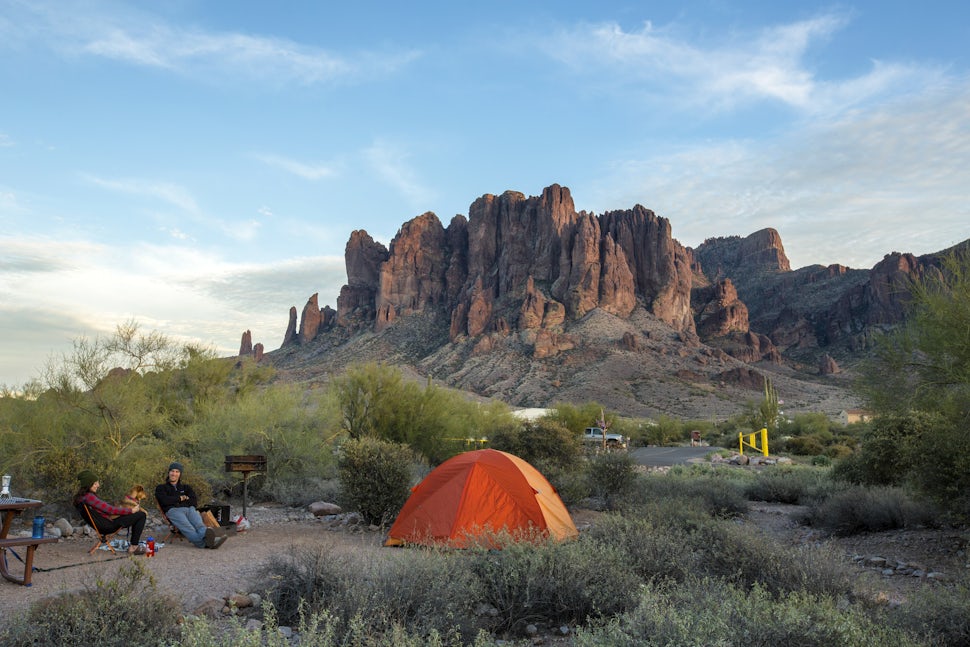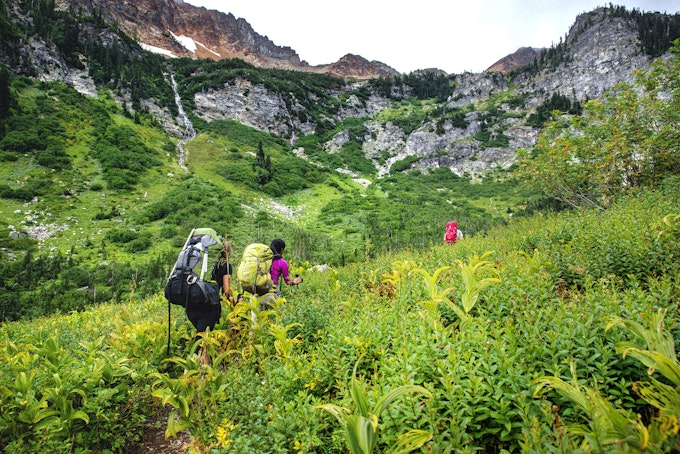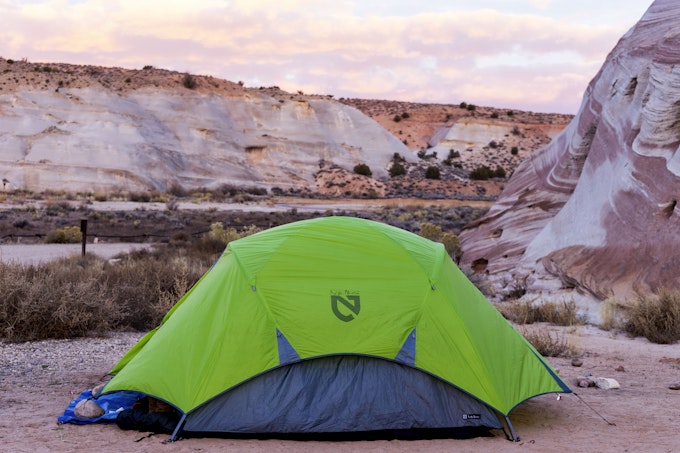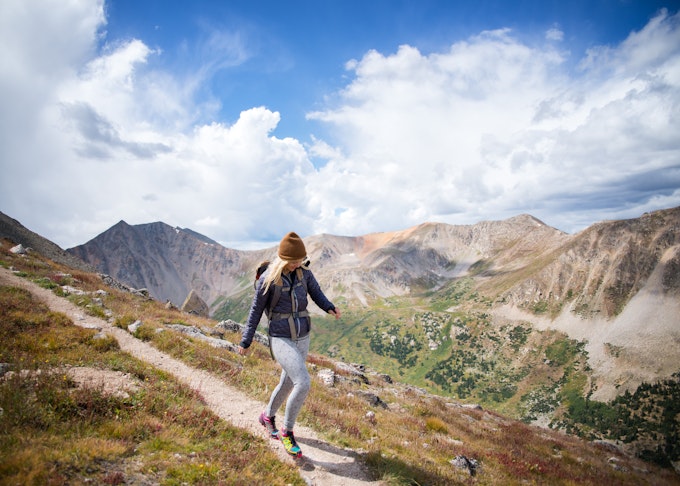#ProtectTheWild: 5 Tips For Traveling And Camping On Durable Surfaces
Minimize your impact on the places you love most.

I’ve worked for the United States Forest Service for three years now and have seen some pretty devastating impacts from humans on our wild lands. Of course, people making these impacts aren’t out to destroy nature, they simply don’t know that they’re causing harm. With this in mind, I’ve put together some simple tips to remind all outdoor enthusiasts how to #ProtectTheWild by practicing low-impact camping and travel. After reading these five tips inspired by Leave No Trace principles, you’ll have a strong understanding of why things like camping too close to water or cutting corners while hiking on switchbacks can be so detrimental to the environment.

Backpack Spider Gap to Buck Creek Pass | Photo: Nick Lake
1. Watch your step
Try to avoid cutting those painfully winding switchbacks by doing your part and sticking to the trail. Switchbacks are in place for a reason: to protect the mountainside from heavy erosion. Additionally, if you’re on a narrow trail, it’s best to use the single file style of hiking. The opposite, social hiking, is when you’re walking in tandem. By doing this, you’re widening the trail, contributing to erosion, and altering the trailside vegetation. Just remember that each step you take is leaving a mark on the earth, so try to be conscious about them. Sometimes you have to travel off-trail - to find bathroom privacy, for example, or to explore around your campsite - so just be sure you and/or your group don’t reuse the same route too many times, which can create a trail where it shouldn’t be.
2. Talk about it
When you make it an issue, people start caring. I like to verbalize why I’m making the choices I’m making while I’m out backpacking. This helps the people I’m with realize the importance of actively respecting the environment. Something I’ve noticed is that when people are in larger groups, it can be easier to get caught up in the group having fun and forget how important it is to take care of the area you're exploring. When you’re in a large group, keep everyone accountable and encourage each other to practice LNT principles.
3. Plan ahead & do your research
Knowing which places you can legally set up your tent or hammock will most definitely help you make the least amount of impact as possible on the surfaces. Most places have previously impacted campsites that you should use rather than creating your own. Camping regulations put in place by the U.S. Forest Service, National Park Service, and other agencies are generally in place for ecological reasons, so look up the regulations for your chosen destination and do your best to adhere to them when selecting your campsite.

Desert Camp at White House Campground | Photo: Nick Tort
4. Don’t camp too close to the water
Leave No Trace encourages the universal rule of thumb to camp at least 200 feet from water, but some places have different regulations so again, be sure to do your research and follow guidelines relative to your chosen destination. When you camp too close to water in areas where you shouldn’t, you can make an irreversible impact on the aquatic community. Some of the effects you could be contributing to are heavy erosion, which leads to a lesser clarity of the water you’re near, harming burrowed amphibians, compacting soil that vegetation needs to germinate, making wildlife uncomfortable with coming down to the water to drink, potentially contaminating the water with your camp, and so much more. On top of all of that, when you’re out camping...do you really want to see tents lining the lakeshore? Camping away from the water’s edge allows others to have a view of the natural shoreline. There are so many potential downsides of camping too close to the water...it’s just not worth it, if you ask me.
5. Know your surfaces
Every outdoor enthusiast should have a strong grasp on the concept of surface durability. The strongest and most durable would be rock, sand, and gravel, so make sure to set up camp and travel on these surfaces when possible. Next comes snow and ice because they’re temporary, but make sure that they’re deep enough so as not to harm the vegetation living underneath. Almost everybody knows that vegetation is extremely vulnerable, so just keep this in mind when you’re out and about. Nobody wants to be the guy who inadvertently trampled the most endangered plant species in the area. Also, if you’re exploring in a desert region, watch out for the least durable surface of all: cryptobiotic crust (a thin layer of blackish-colored organisms that retain moisture and help prevent erosion).

Summit La Plata Peak | Photo: Mike Fennel
When people ask me why I’ve dedicated my life to keeping these areas pristine, I tell them that it has nothing to do with being a government employee and everything to do with passion. Sure, governments go to great lengths to protect our wild lands, but it’s not just their responsibility to maintain the wild element of them. Ultimately, if you’re committed to and passionate about Leave No Trace ethics, your outdoor adventures should be as low-impact as possible no matter where you are. Make it a priority to #ProtectTheWild!
Cover photo: Kevin Kaminski
Please respect the places you find on The Outbound.
Always practice Leave No Trace ethics on your adventures. Be aware of local regulations and don't damage these amazing places for the sake of a photograph. Learn More
We want to acknowledge and thank the past, present, and future generations of all Native Nations and Indigenous Peoples whose ancestral lands we travel, explore, and play on. Always practice Leave No Trace ethics on your adventures and follow local regulations. Please explore responsibly!
Do you love the outdoors?
Yep, us too. That's why we send you the best local adventures, stories, and expert advice, right to your inbox.








